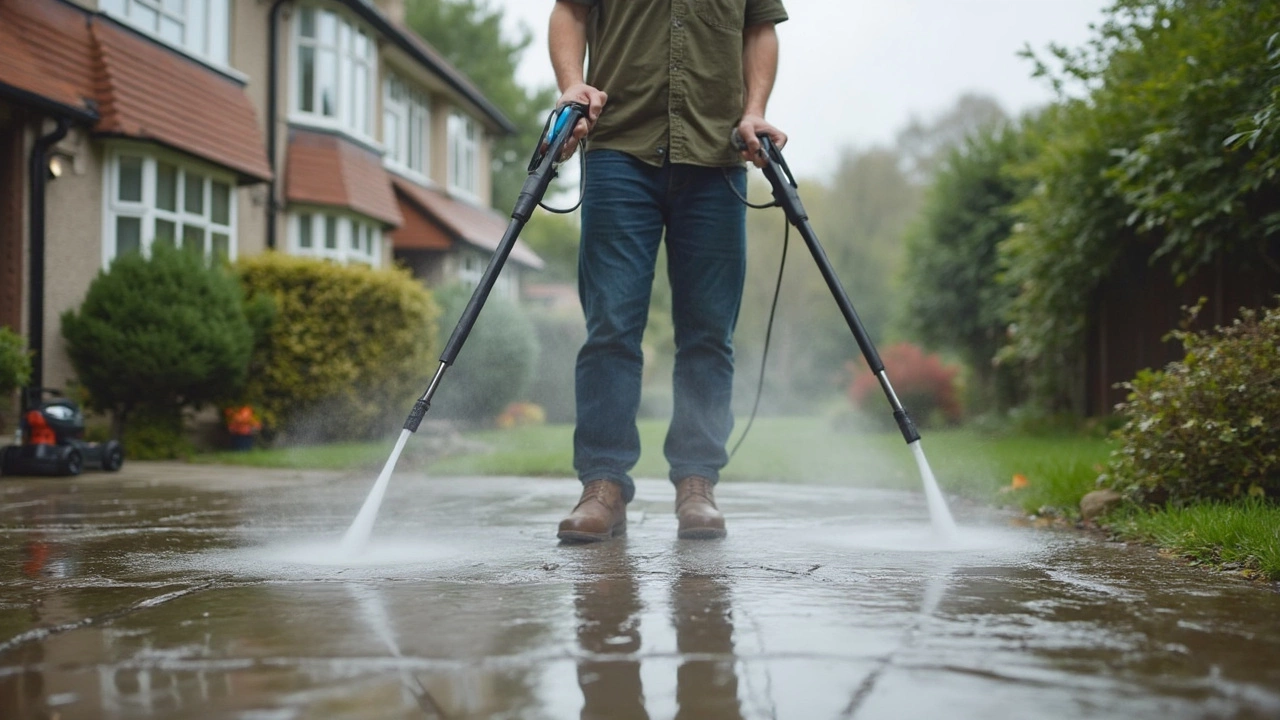Cleaning Driveway: Simple Tips & Proven Methods
Got a driveway that looks like a mud magnet? You’re not alone. Most homeowners let oil stains, leaves, and grime build up until the surface actually feels rough under the tires. The good news? You don’t need a crew of pros (unless you want one) – a few everyday tools and the right approach can bring back that fresh‑look in a weekend.
Why regular driveway cleaning matters
First off, a clean driveway isn’t just about curb appeal. It helps prevent slip hazards, stops weeds from cracking the concrete, and even slows down the wear caused by oil and salt. If you live in a rainy area, the grime can turn into a slippery film that’s dangerous for kids and pets. Plus, a tidy driveway gives a better first impression for visitors and potential buyers.
Think of it like a car’s regular wash – you wouldn’t drive around with a filthy windshield, right? Same logic applies to the ground you park on.
Best ways to clean your driveway
1. Sweep away loose debris. Use a stiff broom or a leaf blower to clear leaves, twigs, and loose dirt. This step makes the next cleaning phase more effective.
2. Tackle oil stains early. As soon as you see a fresh oil spot, sprinkle baking soda or kitty litter on it. Let it sit for 10‑15 minutes to absorb the oil, then sweep it away. For older stains, apply a poultice of baking soda mixed with a little water to form a paste, let it dry, and scrub with a stiff brush.
3. Choose the right cleaner. For most driveways, a mix of warm water and a few drops of dish soap does the trick. If you prefer an eco‑friendly option, combine 1 cup of white vinegar with 1 gallon of water. For tough grime, a commercial concrete cleaner (look for biodegradable formulas) works well.
4. Pressure washing – the big hitter. If you own a pressure washer, set it to 2,000–2,500 PSI for concrete or 1,500 PSI for asphalt. Keep the nozzle at a 45‑degree angle and move it in slow, overlapping strokes. Start from the highest point and work downhill so you don’t push dirty water back up.
If you don’t have a pressure washer, renting one from a local hardware store is cheap and usually includes a short tutorial. Fortis Cleaning Solutions also offers professional pressure‑washing services if you’d rather skip the DIY hassle.
5. Rinse and repeat. After scrubbing, hose down the entire surface to wash away suds and loosened dirt. For large areas, a garden hose with a spray nozzle is fine; for smaller patches, a bucket of clean water works.
6. Seal the surface (optional). Once the driveway is dry, consider applying a sealant. This creates a protective barrier that makes future cleaning easier and extends the life of the pavement. Follow the product’s instructions – most sealers need a dry, sunny day and a clean surface.
Quick tip: do a small test spot before you spread any cleaner or sealant over the whole driveway. This avoids unexpected discoloration.
That’s it – a straightforward plan you can start this weekend. If you run into stubborn moss, a 50/50 mix of bleach and water (use gloves and eye protection) will clear it, but be mindful of nearby plants.
Remember, consistency beats intensity. A quick sweep and a light rinse every few weeks keeps the grime from locking in, and you’ll spend far less time on deep cleans later.
Ready to give your driveway a makeover? Grab a broom, mix up that vinegar solution, and get to work. For those who prefer a hands‑off approach, Fortis Cleaning Solutions is just a call away, offering eco‑friendly, professional driveway cleaning across the UK.

How Much PSI Do I Need for a Driveway? Pressure Washing Made Simple
Wondering what PSI you should use to pressure wash your driveway without damage? This article breaks down the best pressure settings, what happens if you go too high or too low, and how to choose the right tip for your washer. See the real-life differences between gas and electric pressure washers. Get practical tips on tricky spots, oil stains, and when it’s time to call in a pro. This is everything you need to know before firing up your pressure washer on concrete.
Read More